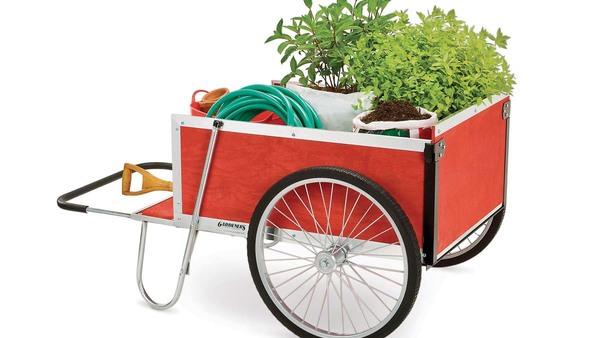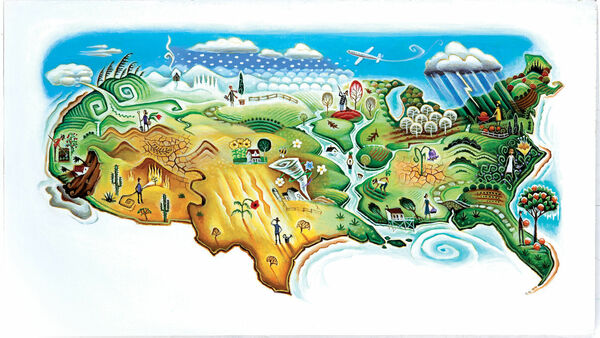Gardeners are concerned not only with how to adapt their gardening tactics to mitigate the effects of climate change, but also with what they can do to reduce their carbon footprint and slow future warming.
• Store carbon
One way that gardeners can impact greenhouse gases is by increasing the carbon storage of their gardens and landscapes. As most people are aware, trees and shrubs remove CO2 from the atmosphere and store the carbon in their wood tissue. This helps to reduce the amount of carbon in the atmosphere, at least temporarily, until the wood is burned or decomposes. Many “Best trees for carbon storage” lists on the Internet focus on fast-growing trees since they are the most effective at converting CO2 to wood. But fast-growing trees are often, though not always, short-lived, meaning the carbon they store will ultimately end up back in the atmosphere more quickly than slower-grower and longer-lived trees. Therefore, planting longer-lived trees such as oaks (Quercus spp., Zones 4–10 ) or beeches (Fagus spp., Zones 3–9) will provide long carbon storage.
Another strategy for storing carbon is to increase the organic matter (OM) in your soil. Most gardeners recognize that increasing soil organic matter improves soil’s water-holding capacity and retention of mineral nutrients. But soil can also be a tremendous sink for carbon. Increasing the organic matter content of your soil by 1% stores 20,000 pounds of carbon per acre. The challenge in increasing soil organic matter, of course, is that some of the OM is broken down by microbes in the soil. However, with regular additions of compost or leaf litter, it may be possible to increase OM of some soils by several percent.
• Reduce emissions
The largest potential to impact greenhouse gases for most gardens and landscapes is through reduced emissions. Burning 1 gallon of gasoline releases 20 pounds of CO2 into the atmosphere. For small lawns, consider using a rotary push mower (yes, they still make them) instead of a gas-powered mower, or pick up a rake instead of a leaf blower. If your physical stamina is not up to a push mower, consider an electric model.
For many, eliminating turf from their landscape entirely has become a means to reduce environmental impacts as well as a cause du jour. For those of us who enjoy an expanse of turf for family recreation, there are still ways to reduce our carbon footprint. The first is to reduce, or even eliminate, turf fertilization. Following a typical four-step annual lawn fertilizer program applies the equivalent of 160 pounds of nitrogen (N) per acre, or roughly the same amount that Midwestern farmers apply to an acre of corn. In many situations, turf can be maintained with half that amount of fertilizer or less. This is important when we consider that producing each pound of synthetic N fertilizer releases about 6 pounds of CO2. Plus, more fertilizer means more mowing.
Converting lawn to beds can further reduce mowing and provide more opportunities to introduce woody plants that can store carbon. Within landscape and garden beds, reduce fertilizer applications or use compost or other organic nutrient sources. Try to place fertilizers in the plant root zone where plants can take them up. Excess soil nitrogen can stimulate soil microbes and result in a belch of CO2 from the soil. Likewise, avoid recreational tillage. A common misconception is the tillage helps to break up heavy clay soils. In fact, repeated tilling reduces soil structure. Mulching or top-dressing with compost is a more effective way of dealing with heavy soils. Avoid working them, and leave earthworms and freeze-thaw cycles to do the work. Moreover, tilling stimulates soil microbial activity and further increases soil CO2 efflux.

















Comments
Log in or create an account to post a comment.
Sign up Log in